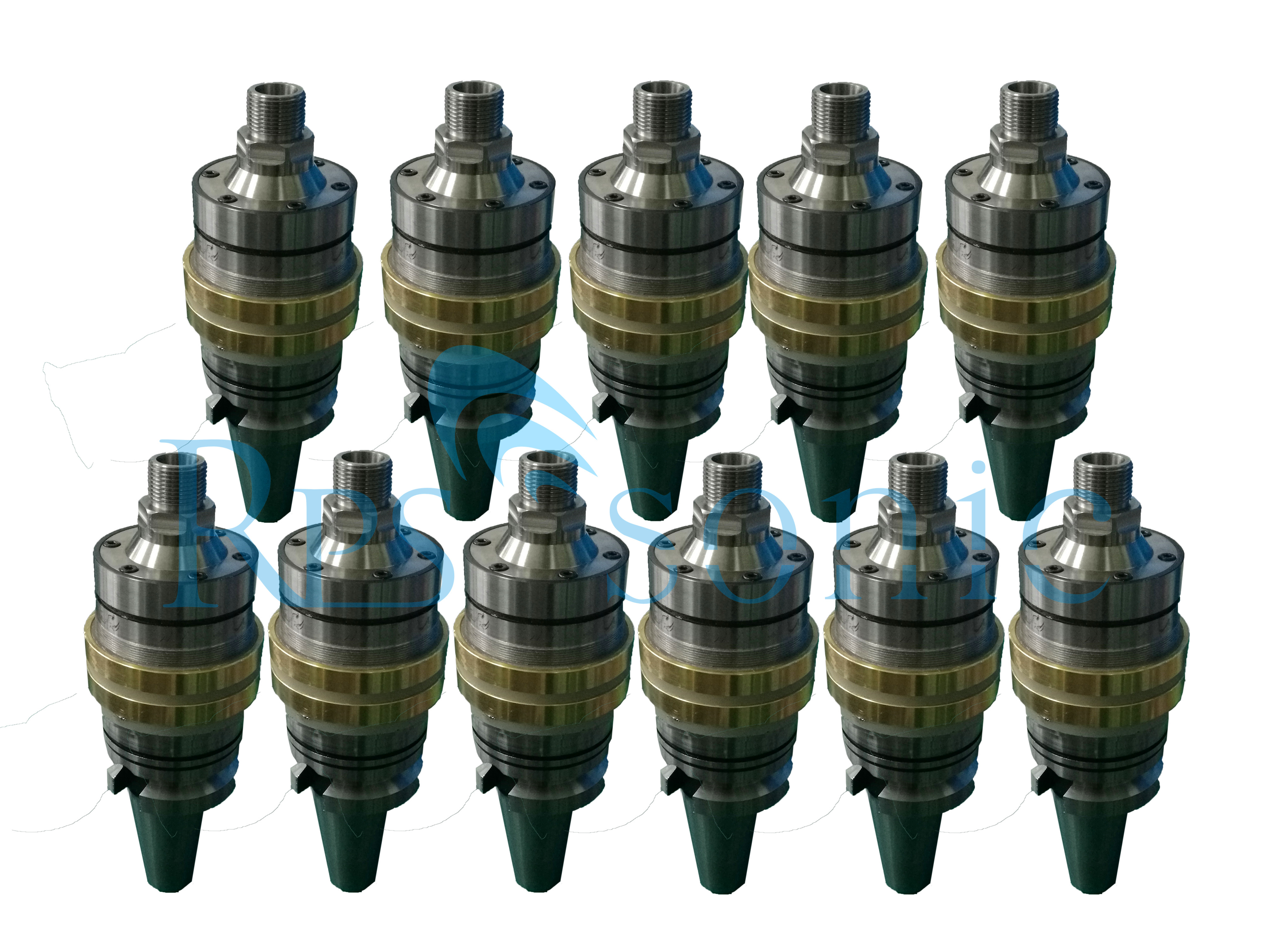20Khz ultrasonic vibration-assisted cutting for ceramic & glass
cutting
Parameter
| Item | Parameter |
| Abrasive | Boron carbide, aluminium oxide and silicon carbide |
| Grit size(d0) | 100 – 800 |
| Frequency of vibration (f) | 19 – 25 kHz |
| Amplitude of vibration (a) | 15 - 50 µm |
| Tool material | Soft steel titanium alloy |
| Wear ratio | Tungsten 1.5:1 and glass 100:1 |
| Gap overcut | 0.02-0.1 mm |
Introduction:
Ultrasonic cutting application technology
ultrasonic vibration-assisted cutting for ceramic & glass cutting can be applied to the processing of electronic components (ceramic
components) and optical components (optical and electronic
components, optical communication components). Difficult cutting
materials such as ceramics are cut.
Problems encountered in the past when machining difficult-to-cut
materials
When cutting difficult-to-cut materials such as glass, ceramics,
metals, and resins, various problems are easy to occur
Due to the phenomenon of passivation of the abrasive particles of
the grinding wheel blades * 1 and clogging of air holes * 2, the
processing load is increased. As the processing load becomes larger
* 3, chipping of the workpiece and the formation of burrs will
further increase, resulting in damage to the grinding wheel blade,
abnormal wear, and burnout of the workpiece.
* 1 Abrasive particles on the head of the grinding wheel are worn
away, and the surface abrasive particles are passivated. In this
state, the grinding wheel blade cannot be processed normally.
* 2 Abrasive particles on the surface cannot be protruded because
cutting debris and adhesive film adhesive of the workpiece are
adhered to the head of the grinding wheel blade. In this state, as
with the abrasive grain passivation, the grinding wheel blade
cannot be processed normally.
* 3 Using finer abrasive particles or increasing the feed speed
will increase the machining load. By observing the change in the
spindle current value, you can confirm whether the machining load
is increasing.
Because the application range of this type of grinding wheel blade
is limited, in order to prevent the occurrence of passivation of
abrasive grains and clogging of pores when selecting a bonding
agent, the process requires moderate wear of the grinding wheel
blade, so a bonding agent other than resin is used It will be more
difficult. In addition, even when selecting the size of the
abrasive grains, it is necessary to use the larger # 320 to # 600
abrasive grains.
In order to solve the problems mentioned above during the
processing of difficult-to-cut materials, our company has developed
Ultrasonic cutting technology as one of its solutions.
When using ultrasonic technology for cutting, the front-back
vibration generated by the ultrasonic vibrator installed behind the
main shaft is transmitted to the outer part of the grinding wheel
blade through the abutment of the main shaft and the grinding wheel
blade, and is converted into an expansion motion in the radial
direction. With this vibration conversion method, the ideal
vibration direction required for ultrasonic processing can be
obtained.
Application:
1. Processing of difficult-to-cut materials: stainless steel,
hardened steel, high-speed steel, titanium alloy, high-temperature
alloy, cold-hardened cast iron, and non-metal materials such as
ceramics, glass, stone, etc., which are difficult to process due to
mechanical, physical, and chemical characteristics, such as Using
ultrasonic vibration cutting can make it easier.
2. Cutting of difficult-to-machine parts: such as slender shaft
parts that are easy to bend and deform, small-diameter deep holes,
thin-wall parts, thin-disk parts and small-diameter precision
threads, as well as complex shapes, high machining accuracy and
surface quality requirements Components.
3. High precision, high surface quality workpiece cutting.
4. Difficult chip removal and chip breaking.
Fourth, the application of ultrasonic vibration chip: widely used
in aviation, aerospace, military and other fields.











